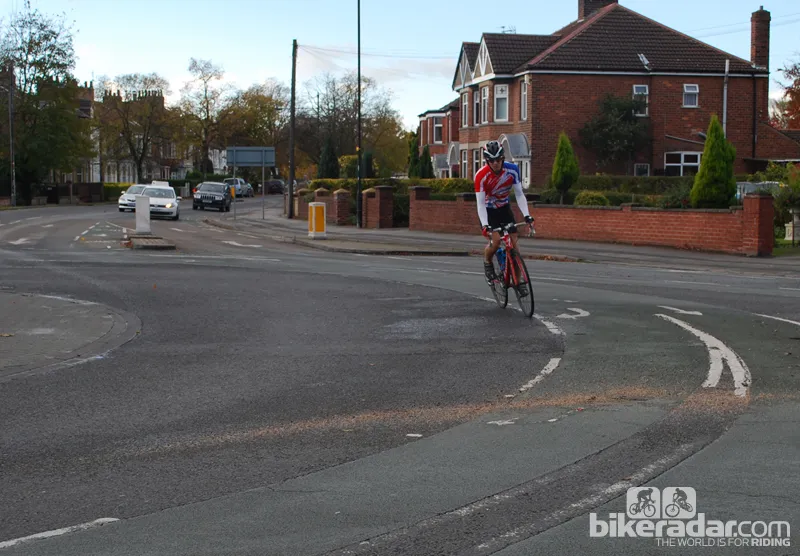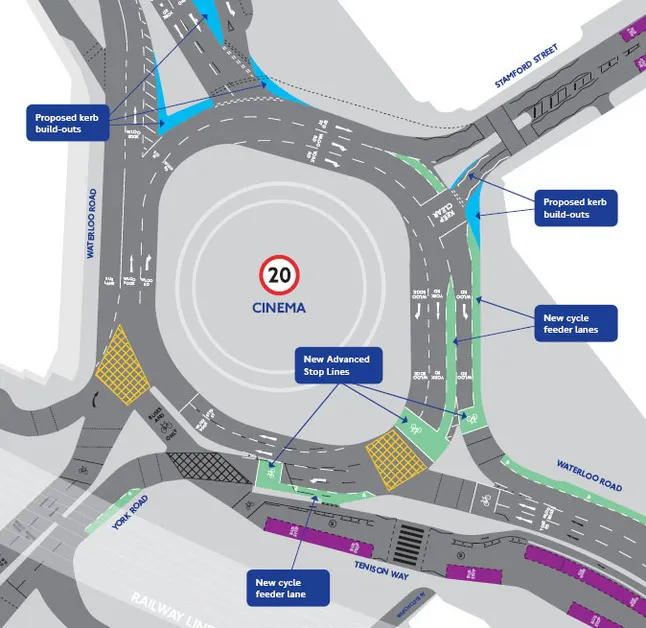The London Cycling Campaign (LCC) are asking Transport for London (TfL) to go back to the drawing board with a redesign for Waterloo roundabout. The major London junction is used by an estimated 5,500 cyclists every weekday – about a quarter of all traffic.
The redesign is part of TfL's 'Better junctions for cyclists' review, and the LCC have welcomed TfL's proposed 20mph speed limit and improvements at the worst collision hotspot. But they say the roundabout "will still be dangerous and intimidating and is likely to remain a major barrier for hundreds of thousands of potential cycle journeys between south London and the city centre".
According to the campaign, the design conspicuously fails to live up to Mayor Boris Johnson's recent letter to the LCC. In the correspondence he stated, "I asked Transport for London to review the London Cycling Campaign 'Love London, Go Dutch' to ascertain how the principles it establishes can be incorporated into the design and implementation of cycling schemes in London, taking into account the UK legal framework and regulations, the physical characteristics of London’s streets, and the needs of all road users."
The LCC commented that, "Dutch street design for cycling would never mix bicycles and motor traffic at such a large junction, and a preferred solution would be to reduce the flow of motor traffic by installing a Dutch-style roundabout with segregated facilities, offering protection for cycling and encouraging people to switch their mode of travel."
As a short-term solution, the LCC suggest improving the bypass route on Cornwall Road and Upper Ground, a route parallel to Waterloo Road and one already chosen by many cyclists to avoid the roundabout.
BikeRadar visited the so-called 'magic roundabout' at Heworth Green, York. Like the Waterloo proposal, it relies on 'strip' cycle lanes adjacent to fast and busy traffic routes (though not Advanced Stop Lines). It's been in operation since 2001 and is lauded by cycling organisations such as the Cyclists' Touring Club.
Half an hour spent watching traffic at the roundabout revealed that a dozen or so cyclists used the junction in a number of ways – two older cyclists rode up and dismounted before crossing, while a faster rider occupied a central road position outside of the designated cycle area. Several used the strip lanes but a few other riders chose to cycle onto the pavement and rejoin a strip route on exit.
Cyclists are invited to send comments on the proposed Waterloo plans to TfL.


